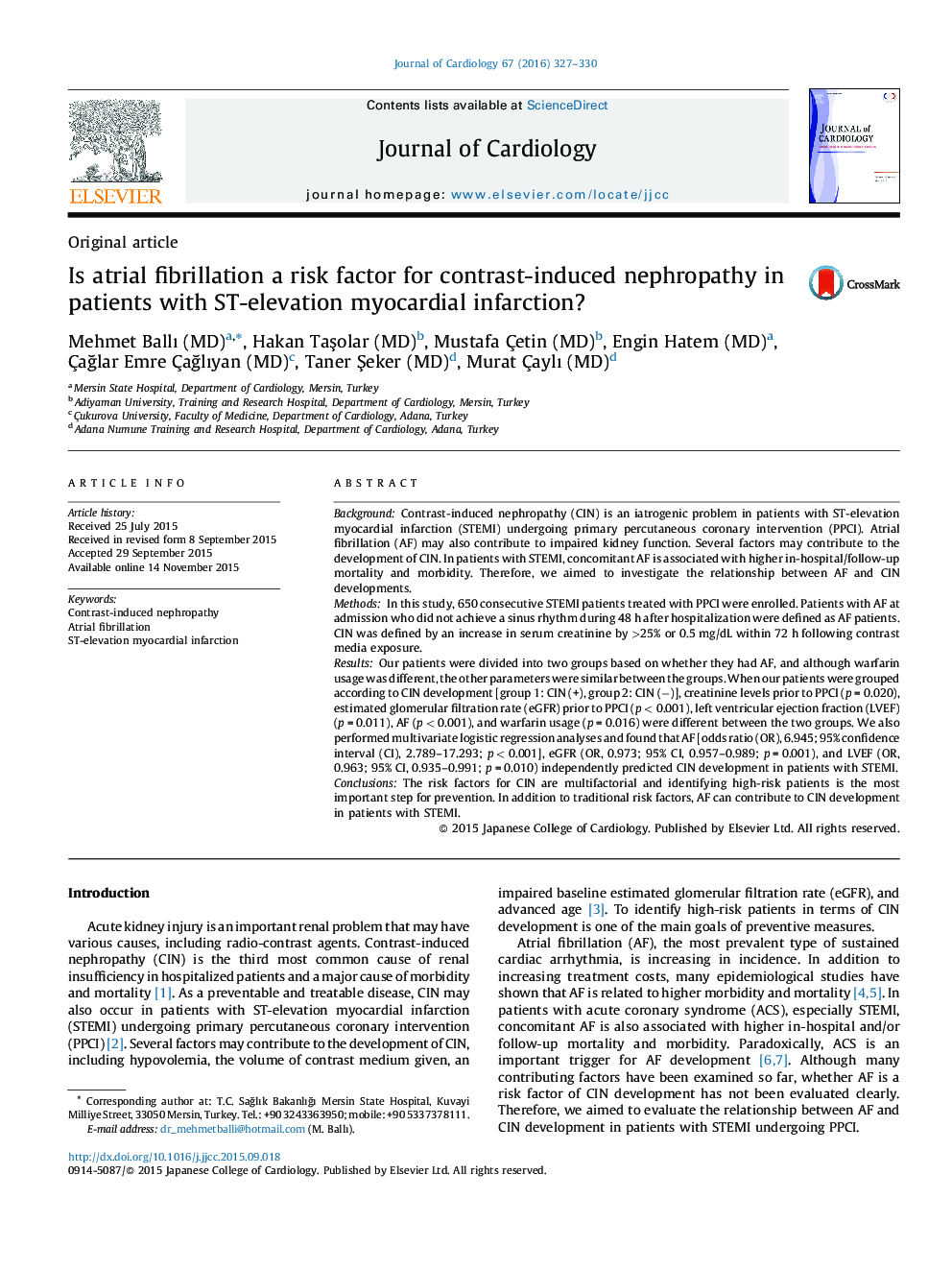| کد مقاله | کد نشریه | سال انتشار | مقاله انگلیسی | نسخه تمام متن |
|---|---|---|---|---|
| 2962859 | 1178509 | 2016 | 4 صفحه PDF | دانلود رایگان |

BackgroundContrast-induced nephropathy (CIN) is an iatrogenic problem in patients with ST-elevation myocardial infarction (STEMI) undergoing primary percutaneous coronary intervention (PPCI). Atrial fibrillation (AF) may also contribute to impaired kidney function. Several factors may contribute to the development of CIN. In patients with STEMI, concomitant AF is associated with higher in-hospital/follow-up mortality and morbidity. Therefore, we aimed to investigate the relationship between AF and CIN developments.MethodsIn this study, 650 consecutive STEMI patients treated with PPCI were enrolled. Patients with AF at admission who did not achieve a sinus rhythm during 48 h after hospitalization were defined as AF patients. CIN was defined by an increase in serum creatinine by >25% or 0.5 mg/dL within 72 h following contrast media exposure.ResultsOur patients were divided into two groups based on whether they had AF, and although warfarin usage was different, the other parameters were similar between the groups. When our patients were grouped according to CIN development [group 1: CIN (+), group 2: CIN (−)], creatinine levels prior to PPCI (p = 0.020), estimated glomerular filtration rate (eGFR) prior to PPCI (p < 0.001), left ventricular ejection fraction (LVEF) (p = 0.011), AF (p < 0.001), and warfarin usage (p = 0.016) were different between the two groups. We also performed multivariate logistic regression analyses and found that AF [odds ratio (OR), 6.945; 95% confidence interval (CI), 2.789–17.293; p < 0.001], eGFR (OR, 0.973; 95% CI, 0.957–0.989; p = 0.001), and LVEF (OR, 0.963; 95% CI, 0.935–0.991; p = 0.010) independently predicted CIN development in patients with STEMI.ConclusionsThe risk factors for CIN are multifactorial and identifying high-risk patients is the most important step for prevention. In addition to traditional risk factors, AF can contribute to CIN development in patients with STEMI.
Journal: Journal of Cardiology - Volume 67, Issue 4, April 2016, Pages 327–330